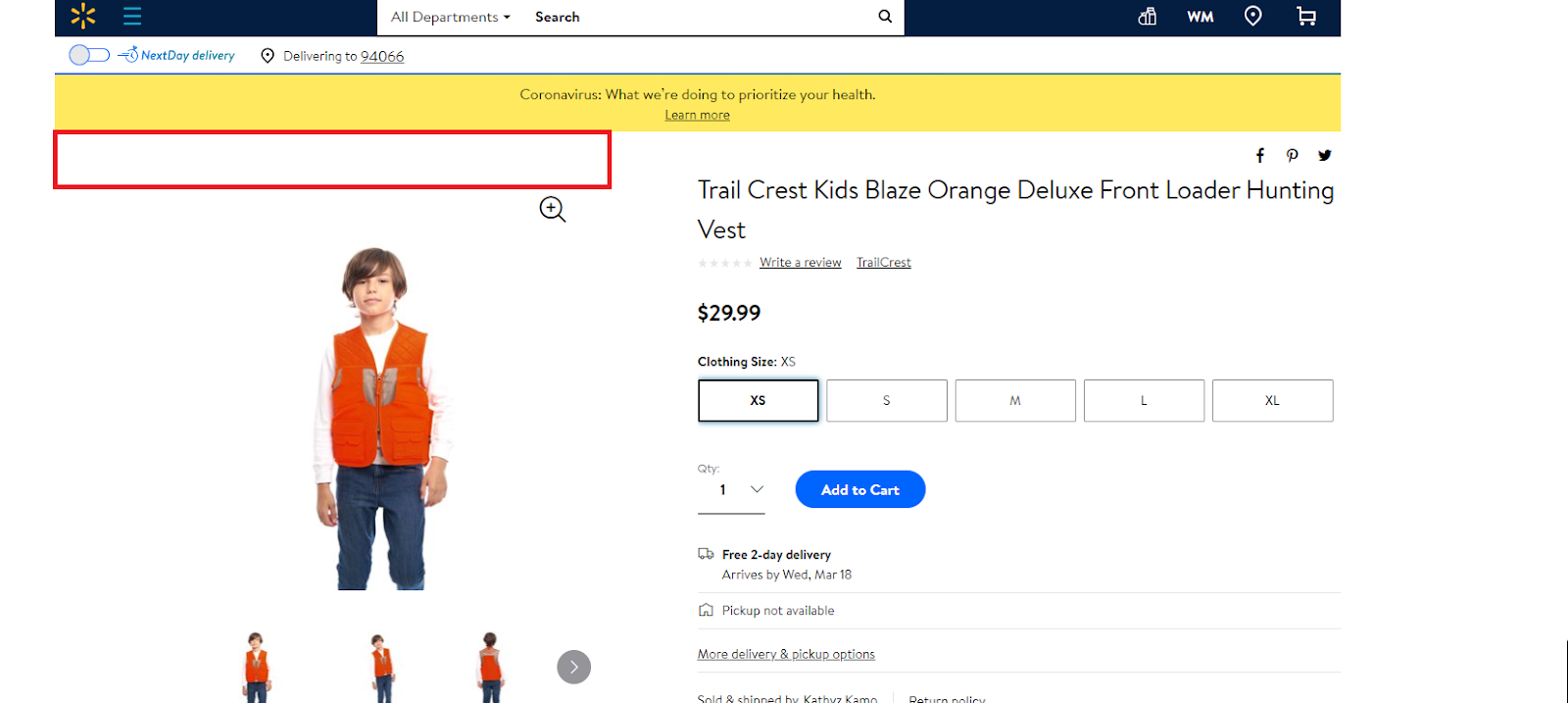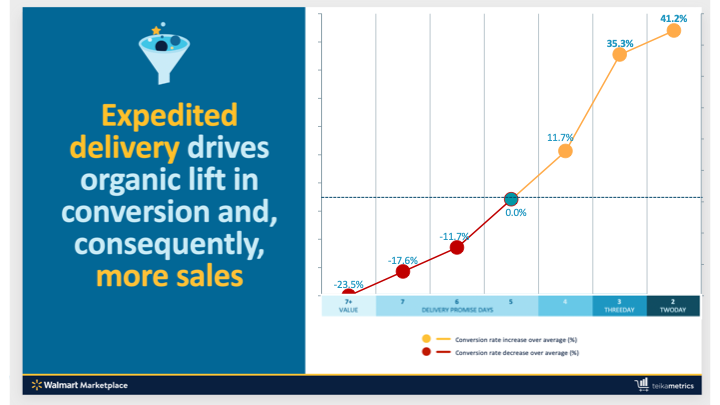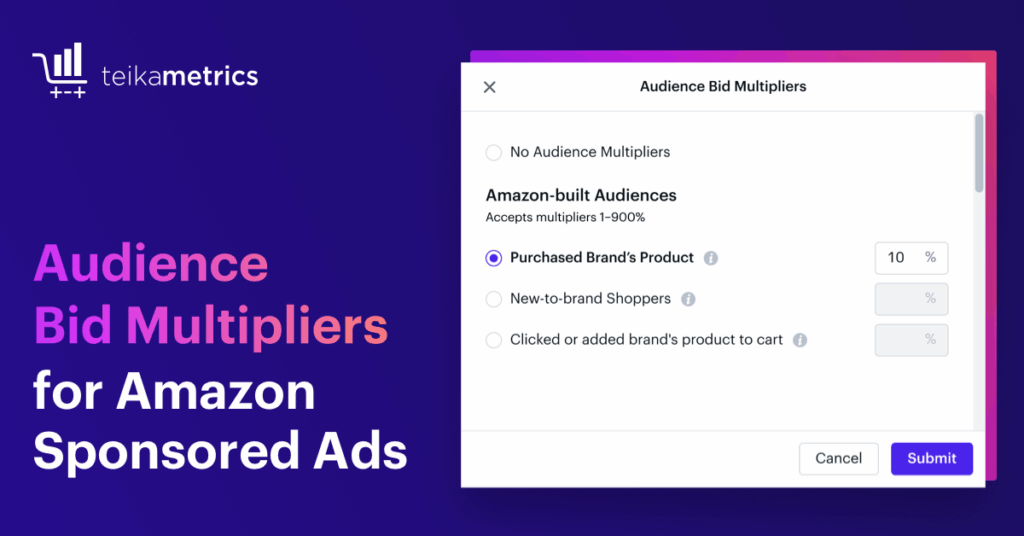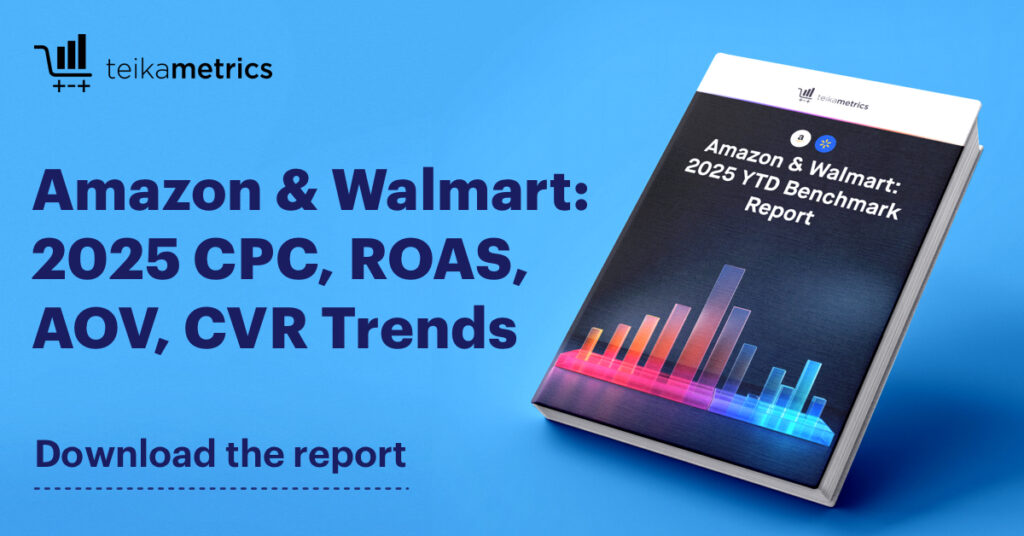It’s no secret that selling on Walmart Marketplace can drive awareness and revenue for ecommerce businesses. Walmart Marketplace now sees over 270 million omnichannel shoppers each week and more than 200,000 active sellers, making it one of the fastest-growing ecommerce platforms in the U.S. Early adopters gain an advantage as competition remains lower than on Amazon.
However, to grow profitably via the Walmart Marketplace, you need to lay the groundwork to get your business retail-ready.
Retail-readiness for Walmart.com starts with becoming an approved seller, and then continues with devoting strategic attention to key aspects like catalog structure, item categorization, Buy Box, inventory, reviews, fast shipping tags, and advertising budgets.
First things first:
How to Start Selling on Walmart Marketplace
To start selling on Walmart Marketplace, you need to become an approved seller.
How do you become a seller on Walmart Marketplace?
To become a seller, visit the Walmart Marketplace signup page, fill out the application, and complete the three-step onboarding process: business verification, payment setup, and shipping configuration. Once verified, you can list products, set up fulfillment, and start selling through Seller Center.
What are the requirements to sell on Walmart Marketplace?
To sell on Walmart Marketplace, you need a Business Tax ID or license number, documents verifying your business name and address, a history of eCommerce success, products with GTIN/UPC GS1 numbers, and a catalog compliant with Walmart’s Prohibited Products Policy.
Sellers must also fulfill from a U.S.-based warehouse with returns capability — either through Walmart Fulfillment Services (WFS) or an approved third-party logistics (3PL) partner.
In addition, Walmart generally expects sellers to demonstrate a history of ecommerce success and reliable fulfillment operations, though newer businesses can still apply if they meet quality and compliance standards.
Do I need a business license to sell on Walmart Marketplace?
Yes. You need a Business Tax ID or license number to sell on Walmart Marketplace, as a Social Security Number (SSN) is not accepted.
How do you get approved to sell on Walmart Marketplace?
To get approved to sell on the Marketplace, you must submit a complete and accurate application including verified business information, tax details, and a compliant product catalog. Having prior marketplace success, filling in all required details, and ensuring none of your products violate Walmart’s policies can speed up approval.
How long does it take to get approved as a Walmart seller?
Creating your Walmart Marketplace account takes only a few minutes. Approval typically occurs within a few business days when all documents are accurate, though more complex applications can take longer — depending on product categories and verification needs.
Is it hard to get approved to sell on Walmart Marketplace?
Walmart maintains a thorough vetting and approval process for new sellers. While this creates a higher bar for entry, it ensures the Marketplace is trusted and upholds strong quality standards that ultimately benefit approved sellers and customers alike.
How to Sell Products on Walmart Marketplace
You sell products on the Walmart.com Marketplace by uploading your catalog to Seller Center, ensuring each item has valid GTIN/UPC numbers and complies with Walmart’s product policies. You can manage inventory, pricing, and orders directly in the platform or through integrations, while fulfillment can be handled by Walmart Fulfillment Services or your own U.S. warehouse.
What can you sell on Walmart Marketplace?
You can sell a wide range of products across categories on the Marketplace as long as they comply with Walmart’s Prohibited Products Policy, which bans items like hazardous materials, alcohol, offensive products, and certain foods. Your product catalog must meet Walmart’s standards for quality, compliance, and safety.
Can you sell digital products on Walmart Marketplace?
No. Walmart Marketplace primarily supports the sale of physical goods that can be shipped and returned. Digital or downloadable products are not permitted according to Walmart’s product listing and prohibited items policies.
Can you sell used items on Walmart Marketplace?
No. Walmart Marketplace focuses on new, high-quality products that meet its standards and complement Walmart’s own offerings. Used, refurbished, or previously owned items generally do not qualify under the platform’s seller requirements.
What are the best items to sell on Walmart Marketplace?
The best items to sell on Walmart Marketplace are those in high-demand, trusted categories such as home goods, electronics, apparel, beauty, and everyday essentials. Products that offer competitive pricing, fast fulfillment, and strong customer appeal perform best due to Walmart’s large, loyal customer base and emphasis on convenience.
How much does it cost to sell on Walmart Marketplace?
There are no setup, subscription, or monthly fees to sell on Walmart Marketplace. Instead, sellers pay only a referral fee on each sale, which ranges from 5% to 20% depending on the product category.
Is it easy to sell on Walmart Marketplace?
Yes. Walmart Marketplace aims to make selling easy through a streamlined application process, no setup fees, access to Seller Center for management, and tools like Walmart Fulfillment Services for fulfillment.
Related Read: Walmart’s Record Marketplace Growth Highlights the Need for a Multi-Marketplace Strategy
How to Succeed on the Walmart Marketplace
Circling back to the idea of retail-readiness for Walmart.com, succeeding on the Marketplace requires devoting strategic attention to seven key aspects:
1. Catalog structure
Catalog structure will affect advertising plans, so it’s important to think it through carefully and choose the right structure for your business.
Putting variants under a base item can be helpful because all of the reviews of any variant will appear on that same base item. Reviews are critical to success on Walmart.com (more about this below) and employing this structure will enable you to essentially reuse reviews.
However, keep in mind that this type of structure can limit marketing real estate because you can only advertise the base item. The SKU can only show up once in the search engine results page (SERP).
If the variants have significantly different prices or margins, and they’re all on one base SKU, you can’t properly optimize your advertising strategy. In this case, it makes the most sense to separate the variants out as their own separate SKUs. That way you can effectively bid on and target your advertising in a way that best matches the business needs for each SKU.
2. Item categorization
Item categorization is critical to helping customers discover items within a huge catalog. If a SKU isn’t categorized at all, it technically exists but it’s not searchable, and you cannot run advertising against that product. In other words, not categorizing the item renders it virtually impossible to discover and purchase.
Here’s an example of an item that isn’t categorized. This kids hunting vest is technically live on Walmart.com and can be purchased, but it cannot be found via search and cannot be advertised.
You’ll also want to make sure your items are categorized appropriately so you’ll be able to quickly select the right item attributes, get the right referral rate (Walmart’s term for their commission), and make your items as easily discoverable as possible.

3. Buy Box
If more than one seller is offering a product on Walmart, there’s a Buy Box, which features one seller at a time. Importantly, shoppers almost always buy from the seller which is in the Buy Box, and Sponsored Products ads will only appear for products that are winning the Buy Box. Depending on your category, competition for the Buy Box on a single SKU tends to be less fierce than on Amazon, but it’s still a factor.
Winning the Buy Box depends on several factors Walmart takes into consideration regarding how well the offering is likely to delight the customer. This includes pricing, inventory on hand, delivery time, content quality, and account performance metrics.
To win the Buy Box your product will need to be competitively priced. You’ll need inventory available, and be able to fulfill the order quickly to meet consumer expectations.
Quality content means that the listing text and images are complete, accurate, and engaging. You can gauge this with Walmart’s Listing Quality Dashboard. Account performance metrics are about how well your business delivers and includes seller history and customer feedback.
4. Inventory
The ability to run a profitable business on Walmart.com requires attention to inventory management. It’s important to have the stock available to fulfill orders and to replenish inventory in a timely way to avoid stocking out and missing out on opportunities for sales.
Remember that promptly fulfilling orders is part of what goes into the Buy Box calculation. Ads also won’t be served for items that are out of stock.
Just as you don’t want to stock-out, you also don’t want to over-invest in inventory. Excess inventory ends up sitting around in a warehouse accruing storage costs.
These are the reasons why it’s so important to have a system for maintaining the optimal inventory on hand to meet the demand on Walmart.com.
5. Reviews
Reviews from customers play a substantial role in influencing purchase decisions. 80-90% of shoppers rely on reviews before they buy. Regardless of product category, a substantial number of positive reviews will increase conversions and improve your Buy Box percentage.
You can gather great reviews by offering great products and customer service. Make sure that your listings are complete and accurate so that there’s no mismatch between expectations and reality.
Reviews can be a two-way street of communication between seller and customer — ask for reviews and be sure to always respond to negative reviews. This demonstrates that you’re listening and care about your customers.
Walmart partners with other service providers to support gathering reviews. For example, your business can use Bazaarvoice’s Spark Review program to collect customer reviews and display them on your Walmart product listings. You can also apply to syndicate your reviews to Walmart and make use of the work you’ve already done to collect reviews on other sites.
6. Fast shipping tags
Today more than ever, consumers expect that they can make an online purchase and receive their items before they, for example, run out of soap or leave for the weekend picnic.
For this reason, shoppers look for fast shipping tags, indicating abbreviated shipping times, when selecting items to purchase. They’re even often willing to pay a little more for a product if it has a fast shipping tag.
Walmart’s Expedited Delivery program provides shoppers with delivery within one, two, or three days. This program improves search rankings, increases Buy Box ownership and increases conversions.

To participate in the Expedited Delivery program, you must apply and meet Walmart’s criteria for free shipping, on-time fulfillment, and low order cancel rates.
7. Advertising budgets
On Walmart.com, advertising is necessary to reach new audiences and beat the competition for sales. Launching new products on the site requires an advertising investment to establish the product, garner reviews, and win the Buy Box, setting off the flywheel effect. In other words, it’s important to allocate a sufficient budget to properly advertise.
The primary ad type on Walmart.com is Sponsored Products. We recommend using both auto and manual campaigns — use auto campaigns to explore and discover new keywords and use manual campaigns to better target proven keywords from those automatic campaigns.
Related Read: 3 Reasons Brands Miss Their Profit Targets on Amazon & Walmart — and What to Do About It
Is Selling on Walmart Marketplace Worth It?
Yes. Selling on Walmart Marketplace is worth it for many businesses because it offers access to over 120 million monthly Walmart.com visitors, no setup or monthly fees, and competitive referral rates. With trusted fulfillment options, strong brand credibility, and tools like Walmart Fulfillment Services, sellers can efficiently grow their reach and sales on a reliable, large-scale platform.
At the same time, the right partner can make all the difference. Check out these success stories of industry-leading brands and sellers leveraging Teikametrics’ platform and ad management services.
*Originally published November 4th, 2020. Updated October 28th, 2025.





